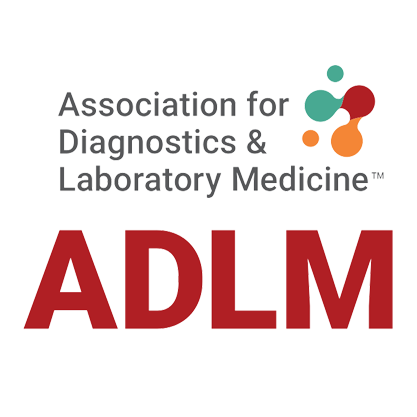Sexually transmitted infection (STI) cases across the world are an ever present and ever-increasing issue, not only to adults but to a foetus. Two diseases of particular importance are HIV and Syphilis (caused by the bacterium Treponema pallidum).
How big a threat are STIs in today’s world?
The most recent figures show that in the US, Syphilis cases have tripled between 2013 and 2018 , which includes 5,726 pregnant women. Between 2008 and 2018 Europe also saw a 50% increase in Syphilis and Canada’s cases have more than doubled. In these high-income countries men are disproportionately affected, however, in low to middle income countries (LMIC), syphilis is endemic to the general population and makes up over 90% of worldwide case numbers. This also means high numbers of infections in pregnant women, leading to increased cases of congenital Syphilis.
Syphilis is classed as an ulcerative STI, which means it causes genital ulcers. These ulcers facilitate the acquisition of HIV during intercourse, increasing the chance of transmission five-fold. Coinfections of Syphilis and HIV can increase the HIV viral load and HIV can accelerate the natural history of Syphilis. This means that individuals suffering from a coinfection will more frequently develop neurosyphilis than those with syphilis alone. In LMIC countries such as Tanzania, Uganda, and Ethiopia, the number of HIV positive patients with Syphilis are nearly 10%, and in Ghana, it is as high as 14.8%.

Source: UNAIDS WHO
What does Syphilis mean for pregnant women?
Globally, Congenital syphilis is the second leading cause of preventable stillbirths and there are a plethora of other complications that can arise from untreated congenital Syphilis, such as severe anaemia, jaundice, and ultimately blindness and deafness. In 2016, the World Health Organisation (WHO) estimated that there were 661,000 infants born with congenital Syphilis, and that approximately 40% of babies born to untreated Syphilis, or an estimated 143,000 infants, will suffer early deaths or stillbirths. This is not to say that this is inevitable, and in fact syphilis can be effectively treated with penicillin if caught early enough. This is why testing pregnant women for these infections is so important.
The World Health Organisation (WHO) ‘Prevention of Mother-to-Child Transmission of HIV/AIDS Program’ (PMTCT) aims to eliminate mother-to-child transmission of HIV and syphilis by providing technical support to member states on the uptake of antenatal services like HIV and Syphilis testing, as well as collecting and analysing regional trends.
In higher income countries, high sensitivity and high specificity tests for HIV and Syphilis are performed in labs and protocols are defined for screening of these diseases. In LMIC’s, there are often limited centralised health services or appropriate lab availability for these kinds of tests and so a point of care (POC) approach is taken, which allows for the collecting of a sample, and testing to be conducted in a single visit. POC tests for HIV have proved successful in LMIC countries, with 70-100% of pregnant women being screened. However, there is a clear deficit for pregnant women being screened for Syphilis, falling short at 40-60%. The high prevalence of syphilis in HIV infected patients indicates that there is a need to increase syphilis testing efforts.
What can be done to bridge the gap between HIV and Syphilis testing rates?
There are several combined HIV/ Syphilis POC rapid diagnostic tests (RTD) which aim to increase the rate of syphilis testing by leveraging existing HIV testing programs. To be successful the combined tests must be affordable, easy to use, and appropriate for a POC scenario. The widespread distribution of these combined tests is cheaper and more efficient than two individual tests and can allow for the early detection and treatment of HIV and Syphilis, saving both pregnant women and their unborn children.

Source: World Health Organization
Tests designed with decentralised testing and POC scenarios in mind can be visually interpreted and are easily used. Storage and distribution are big concerns and so these HIV/ syphilis POC tests are compact, have a 2-year shelf life, and can be stored across a broad temperature range. It is important to understand that these tests are only for initial screening, and if positives come back more specific alternative diagnosis methods should be used.
The importance of dual HIV/ Syphilis POC tests in LMIC’s cannot be understated. These tests are projected to allow for an additional 4.4 million women to be tested, with at least 285,000 Syphilis infections in women to be identified. Ultimately this could lead to 38,000 fewer cases of congenital syphilis, and 51,500 child mortalities being avoided.
HIV/ Syphilis Serum and Plasma from Logical Biological
Logical Biological provide a large portfolio of HIV and syphilis serum and plasma products. Testing can be performed on syphilis serum and syphilis plasma using a wide selection of methodologies including TPHA, ELISA and EIA. Available testing for HIV serum and HIV plasma includes LIA, EIA, PCR (copies/ml), Nucleic Acid Amplification, Western Blot, Ratio CD4/CD8 profiling and Chemiluminescent Immunoassay (ChLIA) (S/CO units).
All serum and plasma specimens can be provided according to your custom specifications and are supplied with demographic information available.
Table: HIV and Syphilis serum and plasma available from Logical Biological

Want to hear more from Logical Biological?
Sign up to our newsletter to for the latest updates.
Subscribe Now

)